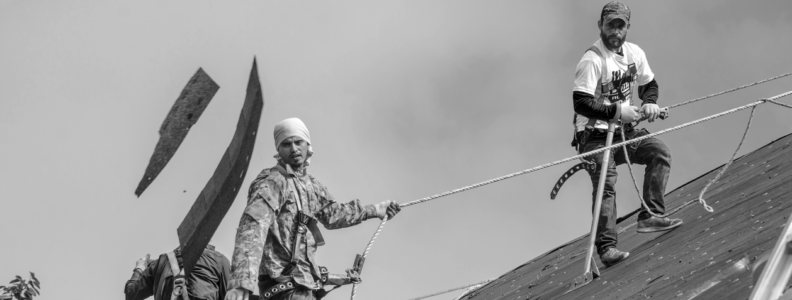Blog
The Nasty Contractors General Liability Endorsements
I’ve written about the Prior Works Exclusion and how it can be a black hole of non-coverage for a contractor. Yes, it’s pretty bad. What I want to write about today is a few more of the nasty endorsements that can eliminate coverage from your Commercial General Liability policy. These endorsements typically – if not exclusively – apply to contractors’ policies.
Contractors – the ones that build, install, service, and repair our buildings and structures – have lots of claims. Insurance companies respond by creating endorsements that chip away at coverage. Here’s a list of some of the most common ones.
Prior Works Exclusion. I’m not going to write much about it here, because I have a more extensive write up here. I’ll just leave it at this: You completed the house in 2014. You had insurance in 2014. You have insurance today with a Prior Works Exclusion and the house burns down today. You have no coverage. Why? Because of the Prior Works Exclusion, which excludes damage resulting from projects completed prior to getting your current insurance policy. You also have no coverage on the policy from 2014 because the damage occurred today, not in 2014.
Manifestation Clause. This one is kind of fading, but it’s still around. What it says is that it will only pay when the damage becomes apparent. Sounds fair enough, but it can be bad. For example, say you are a plumbing contractor and you installed an upstairs shower. You accidentally left a line dripping and over the course of a year, a water mark appears on the ceiling below exposing thousands of dollars of water damage. Technically you have two insurance policies that could pay: the one at the time of completing the project and the one you have now. Why two? Because the damage occurred in both policy periods. With a manifestation clause, the policy that was in force at the time of the project’s completion will not pay because the damage was not visible, i.e., it hadn’t “manifested” yet. Only the current policy will pay. This may not be a big deal to some, but this can be a problem when a) the contractor no longer carries insurance, or b) gets new insurance with a Prior Works Exclusion. As long as you had good insurance at the time that the water damage became apparent, you’re covered. (No pressure, but get good insurance!)
Sunset Clause. What this does is limit the time after the damage occurs that a claim can be honored. Under a normal policy, you have an unlimited amount of time to file a claim. As long as the damage occurred during the policy period, it doesn’t matter when you report the claim to the insurance company. What the Sunset Clause does is put a time frame on when the claim can be reported. For example, say you’re an electrician and you install a ceiling fan in a house in 2016. You’re insured with a 2-year Sunset Clause. In 2019, you get sued for damage that your fan caused in 2016. When you installed that fan, you mistakenly caused all upstairs light bulbs to burn out every time the fan turned on. After years of replacing bulbs, the homeowner finally traced it back to your fan installation job, which is when they filed the claim for $10,000 worth of new light bulbs and hotel bills. Since the policy has a two year Sunset Clause, it does not pay. If there was no Sunset Clause, the policy would have paid because there is no time limit on when claims can be reported. I admit, my example wasn’t that great. However, the fact is, sometimes it takes a long time – many years after the damage occurs – to discover that damage and then additional time trying to figure out who is potentially at fault.
Action Over Exclusion. This one can be bad if you have employees and you’re a subcontractor doing work for a general contractor. With an AOE, the policy will not pay for injuries to employees that result from your injured employee filing suit against the general contractor who then tenders the claim back to you (the reason he tenders it back to you is because you agreed to indemnify him for any bodily injury he could be held liable for). Confusing? Let’s say you’re a drywall installer working as a sub for a general contractor building an apartment complex. In order to get the job, you had to agree to indemnify the general contractor for any bodily injury he could be held liable for. Your employee gets injured, collects workers comp of course, but also sues the general contractor for lack of general supervision. The general contractor then tenders the claim back to you (because you agreed to indemnify him). Without the AOE, your policy will pay. With the AOE, the policy will not pay.
There you have it: four potentially nasty endorsements. As a rule I never offer policies with any of these endorsements. In the world of endless possibilities of bad things happening, it doesn’t make sense to have these endorsements for the minimal savings they provide. Yes, sometimes you have no choice but to accept one or more of these endorsements just to get insurance. In that case, take the time to know what you do and don’t have coverage for. That will allow you to create realistic expectations about your insurance and avoid nasty insurance surprises.
 ELI GILLESPIE
ELI GILLESPIE
I’m the commercial producer and owner at Gillespie Insurance Services.
SCHEDULE A CALL
SEND EMAIL





